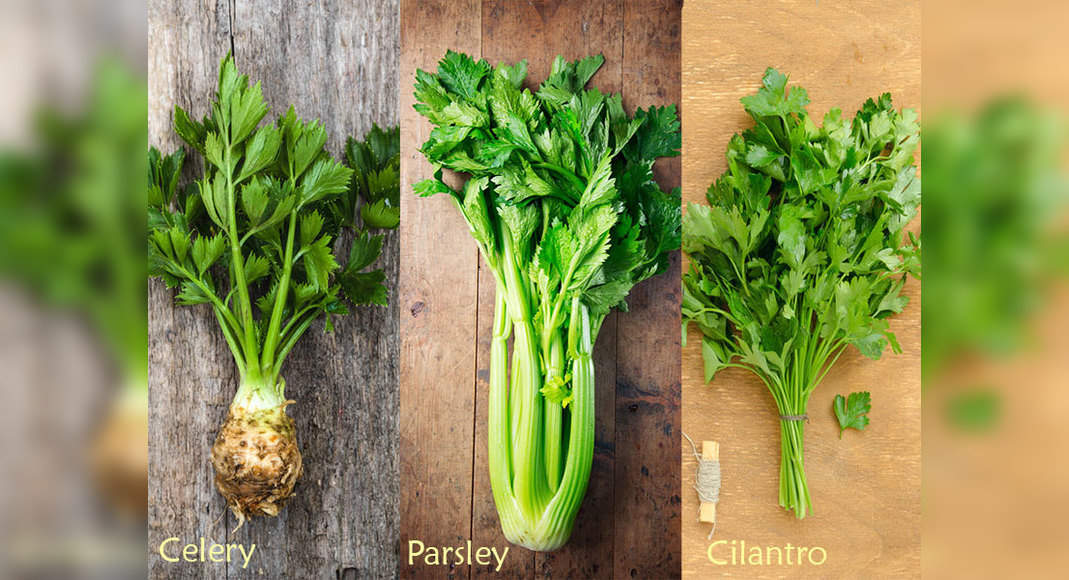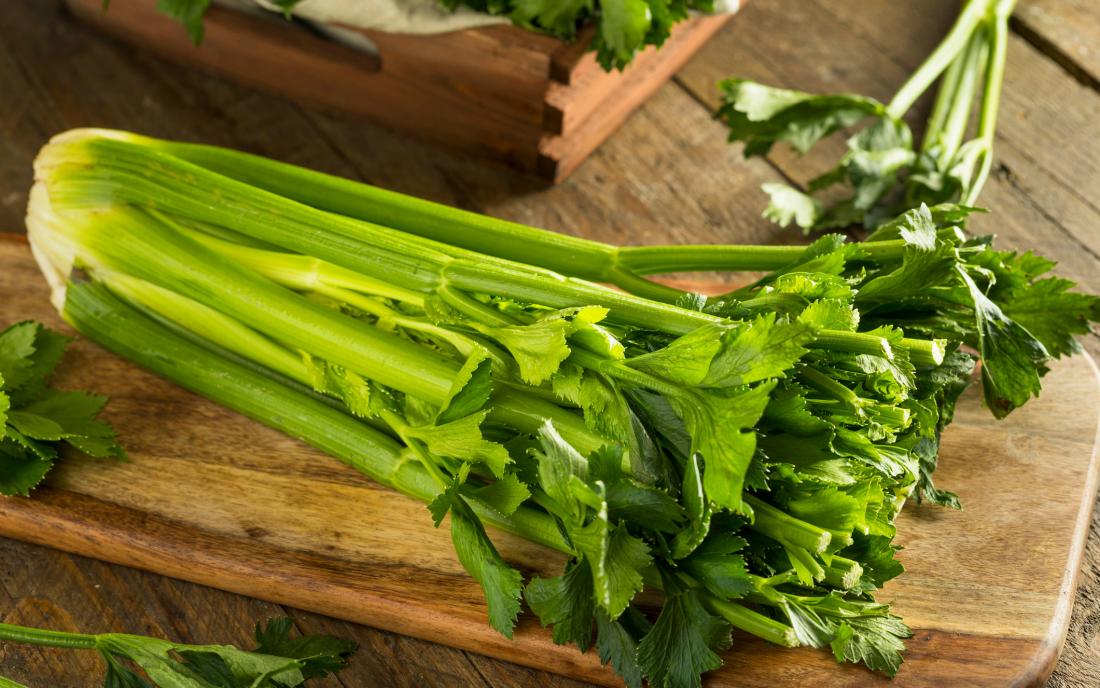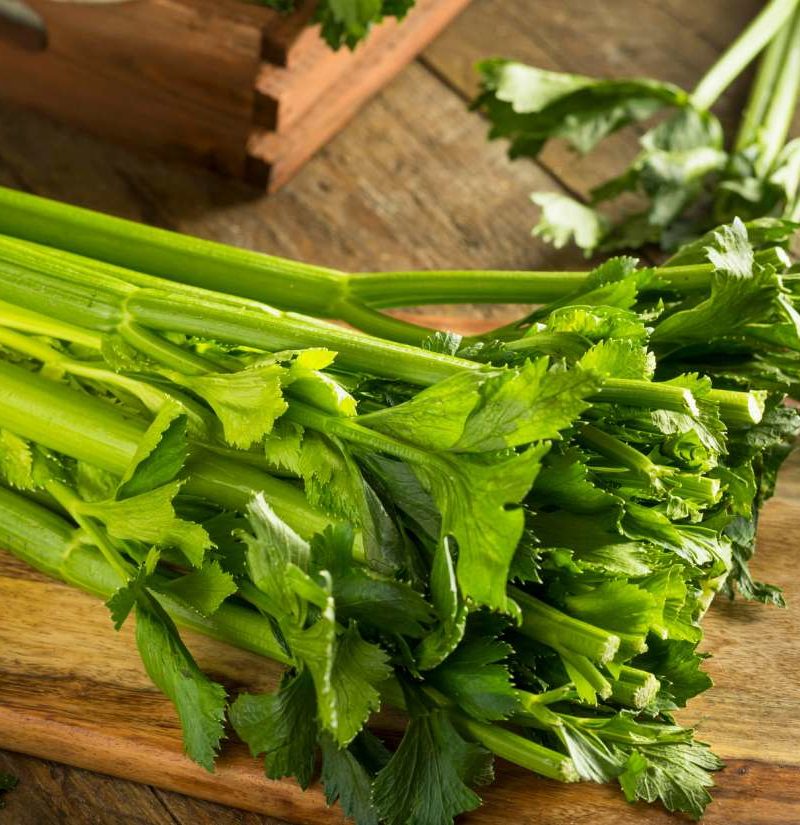Vegetables that resemble celery

When it comes to vegetables that look like celery, there are several options to choose from. These vegetables not only share a similar appearance but also offer unique flavors and health benefits. In this article, I will introduce you to five celery look-alike vegetables that you can incorporate into your cooking repertoire.
Celeriac
Celeriac, also known as celery root, is a vegetable that closely resembles celery in appearance. However, unlike celery, celeriac is grown for its root rather than its stalks. The root of celeriac is knobby and has a rough, brown exterior. Once peeled, it reveals a creamy white flesh that is crisp and flavorful.
Celeriac has a distinct celery-like taste with a hint of nuttiness. It can be used in a variety of dishes, including soups, stews, and salads. Its texture makes it a great addition to mashed potatoes or purees, adding a unique flavor and a slight crunch.
Fennel
Fennel is another vegetable that shares a resemblance to celery, particularly in its stalks. However, fennel has a distinct anise-like flavor that sets it apart. The bulb of the fennel plant is crisp and has a slightly sweet taste, while the stalks are fibrous and can be used as a celery substitute in recipes.
Fennel can be enjoyed raw in salads or cooked in various dishes. It pairs well with seafood, making it a popular ingredient in Mediterranean cuisine. The fronds of the fennel plant can also be used as a garnish or added to salads for an extra burst of flavor.
Chinese celery
Chinese celery, also known as smallage, is a variety of celery that is commonly used in Asian cuisine. It has thinner stalks and a stronger flavor compared to regular celery. Chinese celery is often used as a seasoning or garnish in dishes such as stir-fries, soups, and noodle dishes.
The flavor of Chinese celery is more intense and slightly bitter, making it a great addition to dishes that require a punch of flavor. Its stalks can be used as a celery substitute in recipes, providing a similar texture and taste.
Parsley root
Parsley root is a lesser-known vegetable that closely resembles celery in appearance. It has long, slender roots with a pale beige color. Parsley root has a mild, parsley-like flavor with a hint of sweetness. It can be used in a variety of dishes, including soups, stews, and roasted vegetable medleys.
Parsley root is a versatile ingredient that can be enjoyed both raw and cooked. It adds a unique flavor to salads and can be used as a substitute for celery in recipes. Its texture is similar to that of a carrot, making it a great addition to vegetable dishes.
Cardoon
Cardoon is a vegetable that belongs to the same family as celery and artichokes. It has long, thick stalks that resemble celery but with a more pronounced texture. Cardoon has a slightly bitter taste, similar to artichokes, and is often used in Mediterranean cuisine.
Cardoon can be enjoyed in a variety of ways, including braised, roasted, or added to soups and stews. Its unique flavor and texture make it a great addition to dishes that require a hearty and robust vegetable.
Cooking with celery look-alike vegetables

Now that we have explored the different vegetables that resemble celery, let’s discuss how you can incorporate them into your cooking.
Substituting celeriac for celery
Celeriac can be used as a substitute for celery in many recipes. Its distinct flavor adds depth to dishes, and its texture provides a satisfying crunch. You can use celeriac in soups, stews, salads, or even as a standalone side dish. Try roasting celeriac with olive oil and herbs for a delicious and nutritious alternative to roasted potatoes.
Using fennel as a celery alternative
Fennel can be used as a celery alternative in various dishes. Its sweet and slightly anise-like flavor pairs well with seafood, making it a great addition to fish dishes or seafood salads. You can also use fennel in soups, stir-fries, or roasted vegetable medleys. Try thinly slicing fennel and tossing it with lemon juice, olive oil, and Parmesan cheese for a refreshing and flavorful salad.
Recipes featuring Chinese celery
Chinese celery’s strong flavor makes it a great addition to stir-fries, noodle dishes, and soups. Its stalks can be used as a celery substitute, providing a similar texture and taste. Try adding Chinese celery to your favorite stir-fry recipe for an extra burst of flavor. You can also use it as a garnish for soups or noodle dishes to add a fresh and aromatic touch.
Exploring the flavors of parsley root
Parsley root’s mild and slightly sweet flavor makes it a versatile ingredient in various dishes. You can use parsley root in soups, stews, roasted vegetable medleys, or even raw in salads. Its texture is similar to that of a carrot, making it a great addition to vegetable dishes. Try roasting parsley root with olive oil, garlic, and herbs for a flavorful and nutritious side dish.
Incorporating cardoon into your dishes
Cardoon’s unique flavor and texture make it a great addition to Mediterranean-inspired dishes. You can braise cardoon, roast it, or add it to soups and stews. Its slightly bitter taste adds depth to dishes and pairs well with other robust flavors. Try braising cardoon with tomatoes, garlic, and herbs for a delicious and comforting side dish.
Health benefits of celery-like vegetables
In addition to their resemblance to celery, these vegetables also offer a range of health benefits. Let’s explore the nutritional profiles and potential health advantages of each vegetable.
Nutritional profile of celeriac
Celeriac is low in calories and high in fiber, making it a great choice for weight management and digestive health. It is also a good source of vitamins C and K, as well as minerals like potassium and phosphorus. Celeriac’s high antioxidant content may help reduce inflammation and protect against chronic diseases.
Benefits of fennel for digestion
Fennel is known for its digestive benefits. It contains compounds that can help relieve bloating, gas, and indigestion. Fennel is also a good source of fiber, which promotes healthy digestion and prevents constipation. Additionally, fennel is rich in vitamin C, potassium, and antioxidants, which support overall health and immune function.
Chinese celery’s potential health advantages
Chinese celery, like regular celery, is low in calories and high in fiber. It is also a good source of vitamins A, C, and K, as well as minerals like potassium and calcium. Chinese celery’s strong flavor is due to its high concentration of essential oils, which may have antioxidant and anti-inflammatory properties.
Parsley root’s vitamin and mineral content
Parsley root is a nutrient-dense vegetable that is rich in vitamins A, C, and K. It also contains minerals like potassium, calcium, and iron. Parsley root’s high antioxidant content may help protect against oxidative stress and inflammation. Additionally, its fiber content promotes healthy digestion and supports weight management.
Cardoon’s role in promoting liver health
Cardoon contains compounds that have been shown to support liver health and promote detoxification. It is also a good source of fiber, which aids in digestion and helps maintain healthy cholesterol levels. Cardoon’s high antioxidant content may also help protect against oxidative stress and reduce the risk of chronic diseases.
Conclusion

In conclusion, there are several vegetables that resemble celery in appearance, each offering unique flavors and health benefits. Celeriac, fennel, Chinese celery, parsley root, and cardoon can be used as substitutes for celery in various recipes. These vegetables not only add depth and flavor to dishes but also provide essential nutrients and potential health advantages. So, next time you’re looking for a celery alternative, consider trying one of these celery look-alike vegetables and explore their culinary and nutritional benefits.
FAQs
-
What veggie looks like celery?
Cardone, also called cardoon, is a vegetable that looks like celery, needs cooking before eating and is considered a delicacy at Christmas time.
-
What plant looks like celery but isn’t?
A hardy perennial of the carrot family, lovage, also known as false celery, has a strong flavor of celery with a hint of anise. The plant looks and smells like celery but grows much larger, at times more than 6 feet tall. The stems are thick and hollow and the plant has dark green toothy leaves.
-
What vegetable is most similar to celery?
Fennel is a similar root vegetable to celery but is totally safe to enjoy for those who have a celery allergy! It has a similar crunch factor as well as a similar taste. After cooking, the taste becomes even more mild and more like celery. You can eat all parts of a fennel plant.
-
What plants resemble celery?
Garden Fun Lovage (perennial) – looks and tastes like celery on steroids. The plant can achieve a height of six feet and more, and its stems and leaves have a pleasantly strong, pungent taste. The crisp leaves make a marvelous salad, as the fat, hollow, pale-green stalks are delightful too.
Originally posted 2023-11-09 04:24:33.


